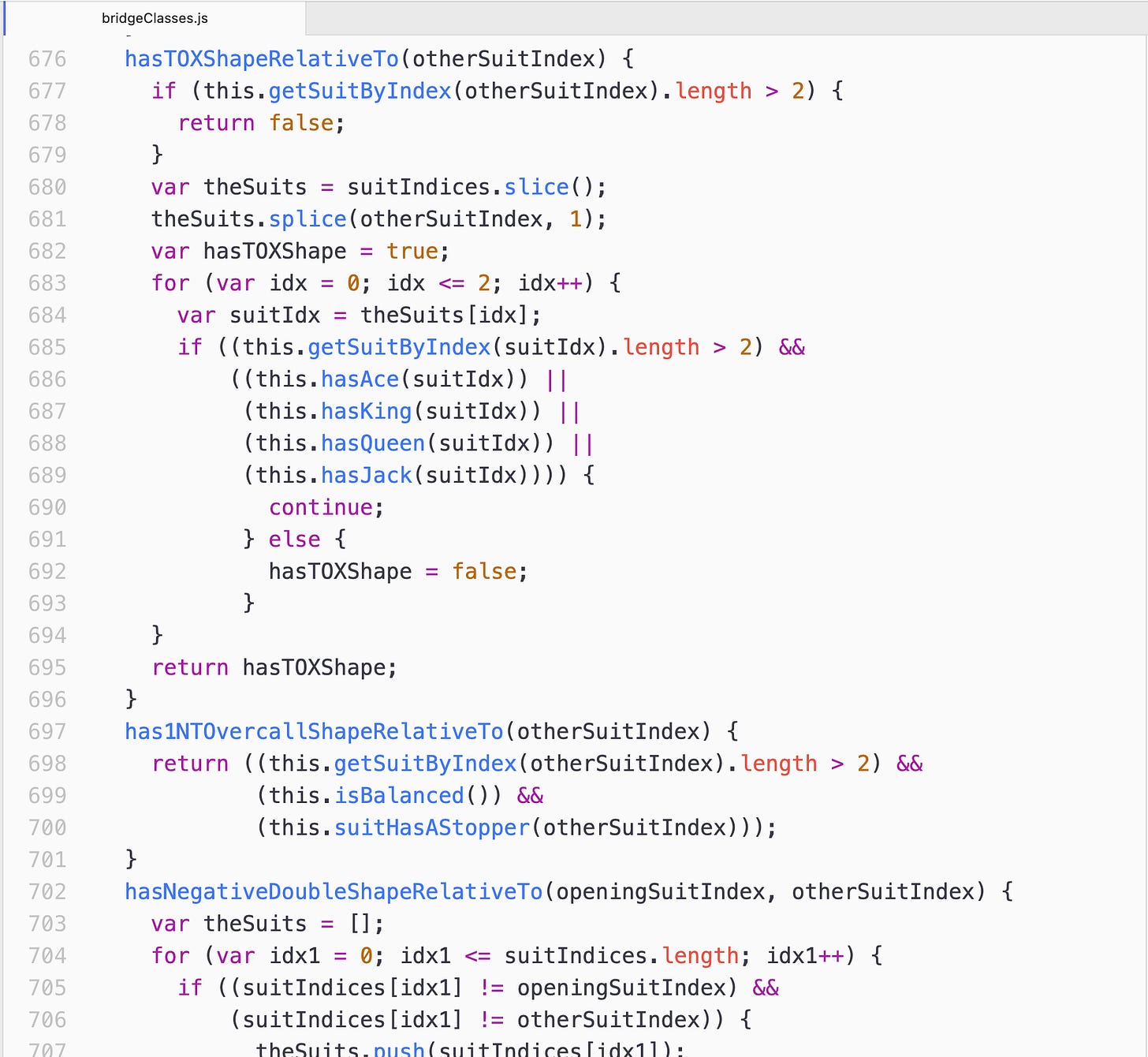NOTE: The rest of this post is obsolete. My bridge deal program now only creates bridge deals. It does provide a button called BridgeSolver that links to an external website that does a great job of deal analysis.
The program that produces deals for this blog also produces deal analysis and an auction. I am going to start including the analysis and auction for one deal at the bottom of each daily post.
Experienced players will notice immediately that the analysis and auction are quite limited. That is because the program is a work in progress and as good as the program is at generating deals, the analysis and auction are rudimentary at best. Also, the analysis consists of a raw text file that is not all that pleasant to read.
Everything—analysis, auction, and presentation—will be improved over time.
This post will serve as a place where I describe the current capabilities of the program. I will update this post as program development continues. Please do not report any apparent errors or omissions involving features that I have not developed yet. Right now such a report could legitimately say “It’s ALL wrong!” I will eventually reach a point where I think the output is both credible and pleasing to look at, and at that point I will open the floodgates to criticism.
Analysis
The deal analysis first shows the options that were input to the deal-generating program. It then displays each hand and for each hand it shows shape, high card points, and quick tricks.
While length points and dummy points are shown as options, for now those options are always set to “no” and the program does not calculate those points.
Auction
The auction is shown twice.
The first time, every decision made by the program is described before the bid is shown. Unlike a person, who without comment would automatically know that (for instance) they would not be likely to consider a very high opening bid in every hand, the program simply starts by evaluating whether high-end bids are possible, then moves on down toward lower bids. The program does not have to operate this way—it could instead determine a point range and other things and enter the evaluation at some middle range of bids. It does it from the top down because I chose to pursue a top-down evaluation both in the program and in my own evaluation at the table. I don’t know yet whether this is ideal, but it does work well as a learning aid because it steps you through the thought process in a very consistent way.
Because the first auction display is so verbose, I follow it up with a simple listing of the bids, including whether each bid is forcing or non-forcing. The determination of forcing/non-forcing is not necessarily correct at this point.
As for how far the bidding goes, right now it supports opening bids for weak hands, including Rule of 20, Rule of 20 + 2, Preempts, and 11-point hands with two good suits including a six-card suit. It will bid 2C or 2NT or 3NT based solely on HCP with no real slam analysis. It also includes 1-major, 1-minor, and 1NT opening bids. Response bidding is very limited, with responses only for 1-major and 1-minor bids.
There are no opener rebids.
Overcalls and interference are not implemented at all.
Presentation
The analysis and auction are dumped to a text file with very little formatting for readability. I simply cut and paste that text into the blog post.



